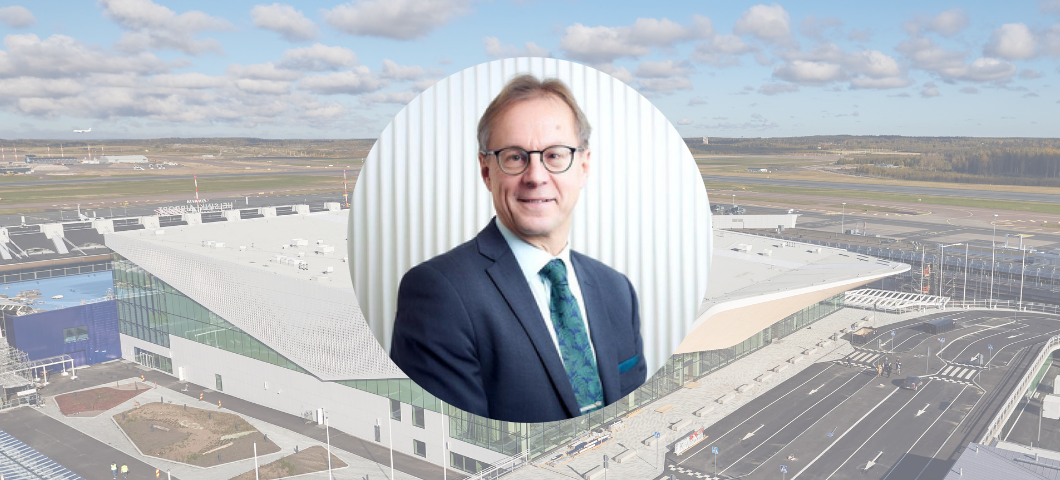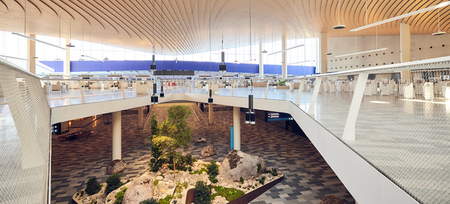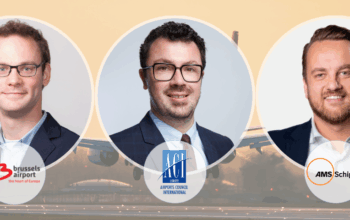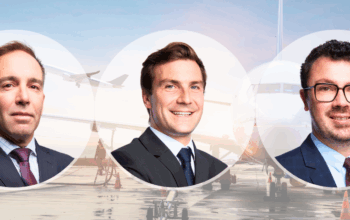
Interview with Mikko Viinikainen
Vice President of Sustainability and Environment at Finavia
In the coming weeks, ACI EUROPE will be showcasing the ways in which Europe’s airports are implementing our Sustainability Strategy with their actions realising the UN’s Sustainable Development Goals. What better way to trail our initiative than to sit down virtually with the leader of ACI EUROPE’s Environmental Strategy Committee and Finavia’s VP of Sustainability and Environment – Mikko Viinikainen. In an exclusive interview, he shares his experience of overseeing the creation of the Strategy and takes us through his own perspectives on what sustainability truly means, in particular in the context of operating airports.
What is your personal definition of sustainability? How do you understand it?
The word sustainability is often understood to align only with the use of limited natural resources by the mankind. In Finnish language the word responsibility is used to cover the economic, environmental and social sustainability on a company level. Airports are committed to net zero emissions in 2050. However, environmental sustainability is not only a question of climate change and carbon emissions. The local direct environmental impacts like water pollution and aircraft noise must also be addressed.
Personally, I feel that a company’s responsibility means not to 100% maximise the economic profits with the cost on the environment, stakeholders, or your staff. I would call responsibility as “fair-play in business”.
You followed the development of the ACI EUROPE’s Sustainability Strategy for Airports as the Vice Chair of the Environmental Strategy Committee. Did this process enrich your work as Finavia’s VP of Sustainability and Environment? If yes, how?
The ACI EUROPE’s vision of a sustainable airport was developed by the Task Force – “Every airport builds local and global partnerships to accelerate the journey towards fair, prosperous and environmentally responsible societies”. To me this is a supreme aggregation of the role of airports. They are essential enablers of success of any society, and today being successful means also being sustainable.
The strategy has greatly helped Finavia to analyse its current activities and the level of maturity we have achieved in our work.
How do you view the role of UN Sustainable Development Goals (SDG) in setting up an airport-specific sustainability strategy? Do you use this framework in your day-to-day at Finavia?
The UN SDGs are not only the 17 colourful squares in a glossy document. The 2030 Agenda for Sustainable Development by the UN in 2015 reads out the SDG in a longer format with sub-goals. The sub-goals have been referred to in the Strategy and linked to the material issues of airports. However, once you have analysed the full list of goals with sub-goals in respect to your airport’s operation and the set of stakeholders, you likely don’t go back soon to the comprehensive list as such again. However, the importance of the SDGs is that they make you approach sustainability from a broader perspective. The comprehensiveness of the Agenda 2030, especially regarding issues in developing countries highlights the importance of air transport in achieving many of the goals.

Which is your favourite SDG and why?
Finavia leads and develops 20 airports with the goal of improving Finland’s connectivity. Therefore, my favourite SDGs are 8 – Decent Work and Economic Growth – and 11 – Sustainable Cities and Communities. As ACI EUROPE has stated in their Sustainable Strategy, a 10% increase in air connectivity comes with a 0.5% increase in GDP per capita. These SDGs are also linked to intermodality. Air transport is the main driver for better connectivity, but a smooth travel chain is always a sum of different modes of transport.
Which sustainability project from Finavia’s portfolio are you most proud of?
I’m very proud to see trout spawning again in the creeks next to Helsinki Airport as a result of our investments in water pollution control. A twenty-year development of remote aircraft de-icing pads, collection of propylene glycol run-off and strict guidance for de-icing operators have improved the quality of the runoff water substantially. Mighty trout spawning so close to the airport perimeter is a rewarding indicator of the work we have undertaken to improve environmental sustainability.
According to you, where lies the biggest added value of the Sustainability Strategy for Airports in guiding airports’ progress towards greater sustainability?
The Strategy is the first airport-specific analysis of sustainability in the context of UN SDGs. I was impressed by the systematic approach adopted by the Task Force in analysing the material issues from airports’ perspective. The strategy includes a comprehensive list of 13 sectors of sustainability and recommends actions to improve performance in each sector. It is a valuable check-list for every airport starting to build its own sustainability strategy. The analysis is not “fit-for-all” and each airport needs to perform a unique materiality assessment of sectors that fit for its environmental, social or economic challenges.
For airports updating their previously drawn strategies, the document can also serve as a check-list of measures that may not have been assessed before. It also provides airports with industry-wide approach on SDGs, a comprehensive list of reference material and a summary of Global Reporting Initiative’s (GRI) indicators in each pillar.
Mikko Viinikainen has been working with environmental issues at Finavia and its predecessors since the early 1990’s. He is responsible for the company’s Environmental Unit, which serves the network of 20 airports in compliancy with environmental regulations and reporting. He is the current chair of the ACI EUROPE Environmental Strategy Committee and chairs also the Collaborative Environmental Management Group at Helsinki Airport. Mikko Viinikainen has a Master’s Degree in Environmental Sciences.



